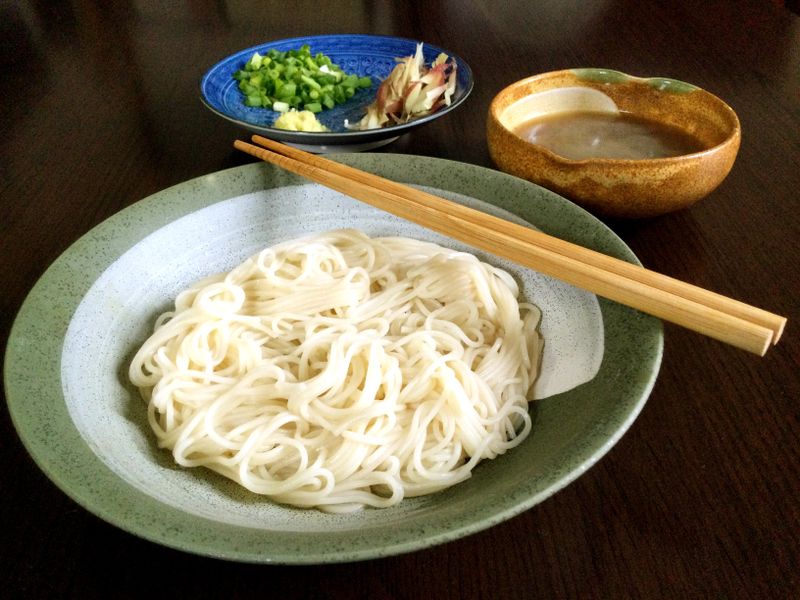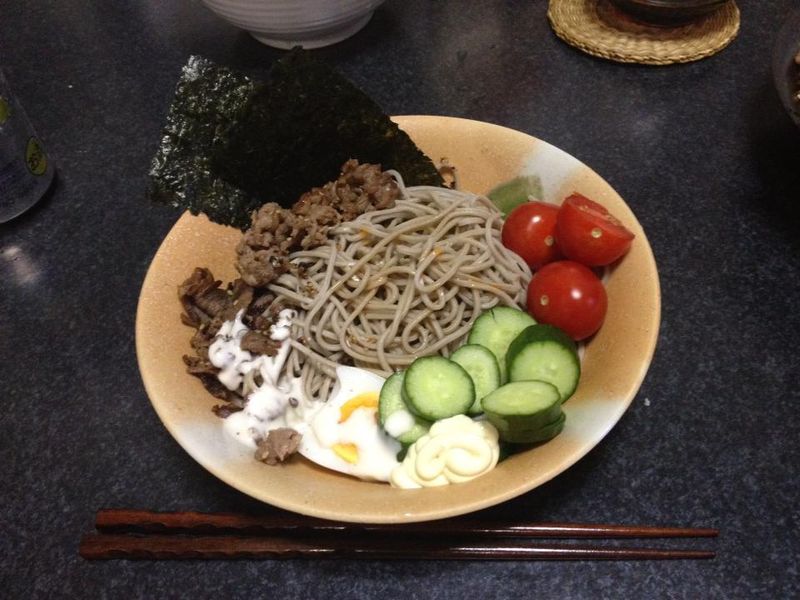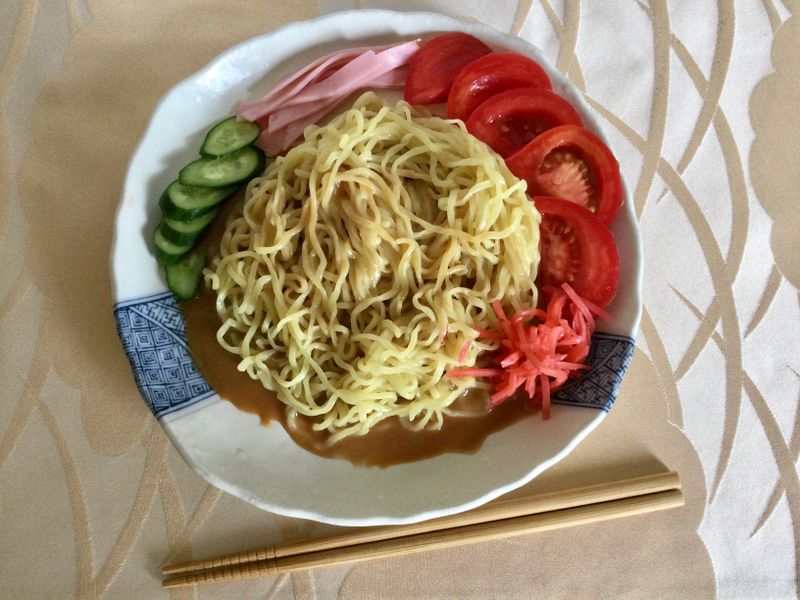Aug 18, 2021
Oodles of Summer Noodles
When it’s hot outside, the last thing you want to do is cook. Natsubate, or summer fatigue, is a real thing here. July and August, and sometimes into early September, the scorching heat and high humidity knock you down and put you off eating, never mind cooking. Sure, a rice cooker saves the day with some salad and pickles. But what really perks up the appetite is noodles. Noodles come in many varieties and they’re quick to prepare. With perky dressings or broth, they restore the appetite and beat the summer blues.
Simple Somen
Somen wheat noodles come in a few varieties. Two summers ago, I told you about chilled chasomen, wheat noodles flavored with Shizuoka green tea. The noodles have a delicate flavor and go best with a simple broth and accompanied by grated ginger. I like to add ooba leaves (perilla) and wakame seaweed to my presentation of chasoba.
More conventional is thin white somen noodles made from wheat flour. For a midweek dinner when I could barely look at food because of the sticky heat, I opted to make chilled somen. The noodles cook fast, about three to four minutes. The dipping sauce I made is a little cloudy. That’s because I thinned the store-bought tsuyu with homemade vegetable broth. The result is earthy, tart, and salty, just what you need to restore appetite.

Chilled somen
Soba
Soba noodles are a year-round favorite in my kitchen. Soba is made from buckwheat flour which is good if you have a restricted diet or are counting calories. They’re gluten, fat, and cholesterol-free, so they’re a healthful choice over udon or rice. They’re also loaded with protein, manganese, and thiamin so they help round out your dietary intake of good stuff.
Soba noodles come in various forms. The kind I prefer is 十割 juwari soba, or 100% soba. These noodles are chewy and have a distinctive buckwheat scent. You’ll also find soba with lower buckwheat content called に八そば nihachi soba. The ni is 20% wheat flour, and the hachi indicates 80% buckwheat. Nihachi soba holds together nicely and has a smooth texture, but still retains the buckwheat aroma.
Not all soba noodles come in that distinctive gray color. You might also find 更級 sarashina soba which is made from the endosperm or core of the buckwheat. They tend to be pale and almost white.
Whatever buckwheat noodle you choose, the cooking directions are about the same. Boil them for about three minutes, turn off the heat, and then leave them in the hot water for a few minutes before you rinse them in cold water.
They’re great on their own but one favorite at my house is to place them in a bowl with grilled meat, some sliced cucumbers and tomatoes, and a drizzle of dressing and mayonnaise.

Hearty version of cold soba
Hiyashi Chuuka
Another summer favorite is cold ramen noodles with sesame dressing. You can get packaged ramen noodles with prepared sauce, but it’s easy enough to prepare the sauce yourself. I usually make mine with sesame paste, soy sauce, rice vinegar, and a dash of rayu chili oil. On the plate I arrange chilled cucumber and tomato slices, some julienned ham, and benishoga ginger.

Hiyashi chuuka with sesame dressing
How do you prepare your summer noodle dishes?



0 Comments